All your web traffic runs through a DNS (Domain Name Service), usually managed by your ISP (Internet Service Provider). Several companies offer alternatives, allowing you to route your traffic through a faster or more secure medium, and the web infrastructure giant Cloudflare has its own DNS for consumers: 1.1.1.1, which promises to be faster than the competition. However, it’s also more secure and private too.
What is Cloudflare?
Cloudflare is a web infrastructure company offering content delivery network (CDN), Distributed Denial of Service (DDoS) mitigation, Authoritative DNS services, and a consumer DNS resolver service. Its network serves over 6 million websites, and between all of its services, Cloudflare has a huge infrastructure spread out around the globe (the closer its CDN servers are to your computer, the faster it can serve content). The sheer size of the Cloudflare CDN also means it had the potential to serve as a consumer-level DNS system.
What is DNS and what makes Cloudflare’s service unique?
DNS is essentially the web’s phonebook. Every website is located at an IP address — a string of digits denoting the server’s exact web location. Because remembering a bunch of IP addresses like “104.16.213.223” would be a pain. Instead, domain names like “WindowsCentral.com” are stored in a DNS database alongside the IP address. So that when you type “WindowsCentral.com” into your browser, the computer sends that domain through the network to a DNS server, which returns the page located at “104.16.213.223.”
Your ISP already offers a DNS resolver, making it easy to get online quickly. But they’re not always the fastest or most secure services, so third-party options have grown in popularity. Over the years, we’ve seen a lot of companies offering fast DNS services, including Cisco OpenDNS and Google Public DNS. While these services are known to be quick and reliable, Cloudflare’s 1.1.1.1 claims to be even faster and more secure.
According to Cloudflare, 1.1.1.1’s average latency is around 14ms, making it the fastest DNS resolver everywhere (Google Public DNS latency average is 34ms). Alongside speed, Cloudflare is also touting greater privacy, promising that users’ records will never be stored on drives and that it’ll flush out logs every 24 hours.
This how-to guide will walk you through the steps to configure your router or computer to use the super-fast and secure 1.1.1.1 DNS resolver from Cloudflare.
Cloudflare free DNS resolver IP addresses
These are the IP addresses to set up Cloudflare’s consumer DNS service on a computer or router.
IP version 4
IP version 6
- 2606:4700:4700::1111
- 2606:4700:4700::1001
How to configure Cloudflare DNS service on router
The best way to change your current DNS settings to start using Cloudflare’s 1.1.1.1 is to reconfigure your router. Instead of setting up each device individually, this approach automatically configures every home device (desktop, laptop, tablet, phone, game console, and smart TV).
To configure your router to use the Cloudflare DNS addresses, do the following:
Important: The instructions to configure may be different on your router. Before proceeding, check your manufacturer support website for more specific details.
- Open web browser.
- Enter the IP address of your router and press Enter.
- Quick tip: You can find out this information using the “Windows key + R” keyboard shortcut, typing cmd, clicking “OK,” and on Command Prompt run the ipconfig command. The router IP address will be the one that is listed in the “Default Gateway” field.
- Log in using your router username and password as required. (Typically, you’ll find this information on a sticker on your router.)
- Open the DNS server settings page. Refer to your router manufacturer support website to locate these settings. However, most of the time, these settings can be found in the advanced settings section. Here’s the location to get to the DNS settings in some of the most popular home router brands:
- Linksys: Setup > Basic Setup.
- ASUS: WAN > Internet Connection.
- Google Wifi: Settings > Networking & General > Advanced Network > DNS.
- Netgear: Internet.
- D-Link: Manual Internet Connection Setup.
- In the DNS settings section use these IPv4 addresses:
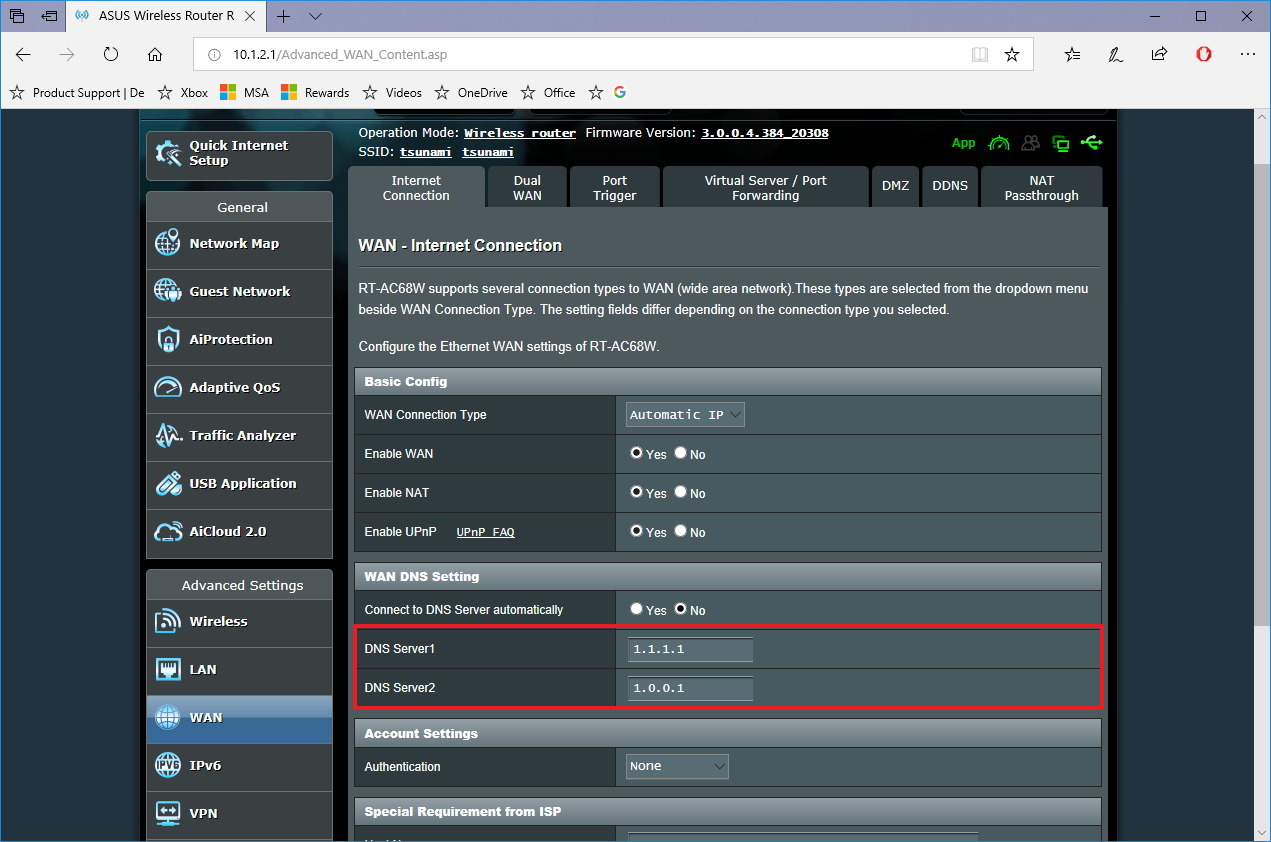
- Save your settings.
- Restart your browser.
Once you complete the steps, restart your computer to start using the new settings.
Alternatively, you can open Command Prompt and run these two commands:
- ipconfig /flushdns
- ipconfig /renew
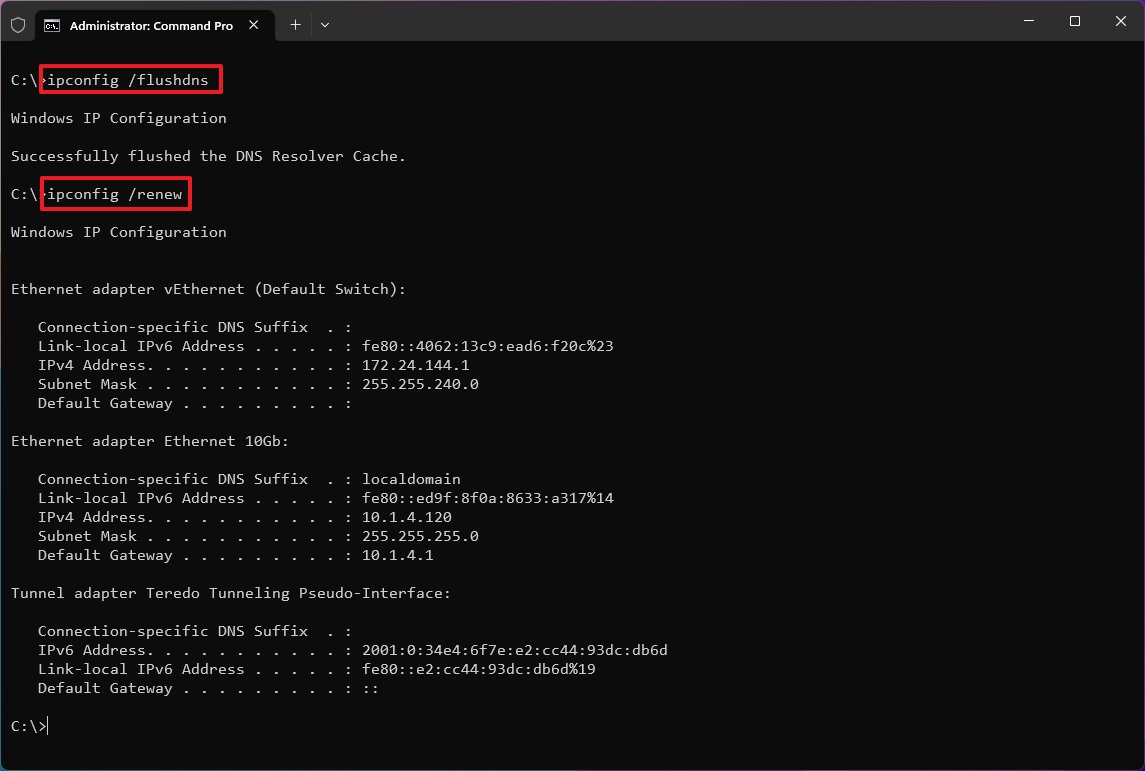
These commands will purge the DNS Resolver cache on your device and request a renewal of the IPv4 settings.
You don’t need to apply the IP version 6 addresses on your router if your network already uses IP version 4. However, if you must use the IPv6 addresses, you must enter them in your router’s IPv6 DNS setting page.
- 2606:4700:4700::1111
- 2606:4700:4700::1001
How to configure Cloudflare DNS service on Windows 11
Alternatively, if configuring your home router is a little challenging, or you want to use the Cloudflare DNS settings on every network you connect, including public networks (for example, coffee shops and airports), with your laptop or tablet, you can configure the DNS settings on Windows 11 (or Windows 10), instead of configuring your router.
Using these instructions is not recommended if you’re using a computer at work because changing these settings could cause connectivity problems and other issues. If you want to change these settings on your work computer, always consult with your IT administrator first.
To set the Cloudflare DNS settings on Windows 11, use these steps:
- Open Settings.
- Click on Network & internet.
- Click the active network connection – for example, Ethernet.

- Under the “DNS server assignment” section, click the Edit button.
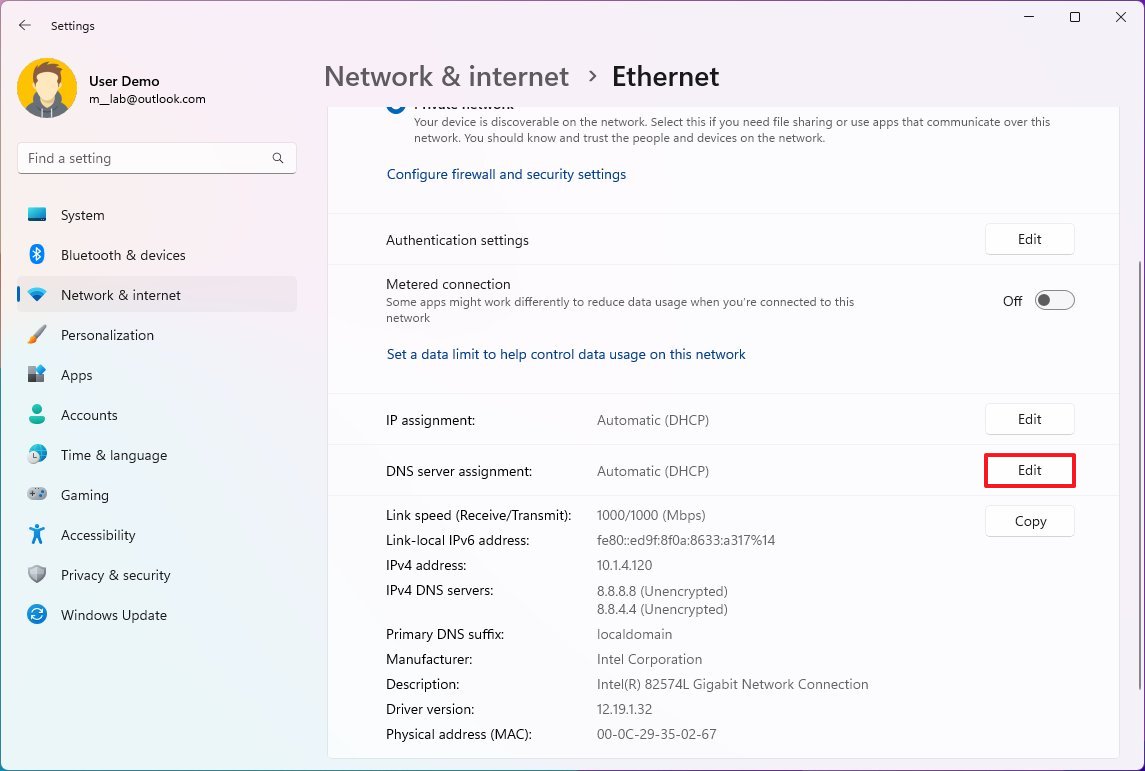
- Select the Manual option.
- Turn on the IPv4 toggle switch.
- Under the “Preferred DNS” section, specify the Cloudflare DNS address: 1.1.1.1

- (Optional) Select the “On (automatic template)” option from the “DNS over HTTPS” setting.
- (Optional) Turn on the “Fallback to plaintext” toggle switch.
- Under the “Alternate DNS” section, specify the secondary Cloudflare DNS address: 1.0.0.1
- (Optional) Select the “On (automatic template)” option from the “DNS over HTTPS” setting.
- (Optional) Turn on the “Fallback to plaintext” toggle switch.
- (Optional) Turn on the IPv6 toggle switch.
- Under the “Preferred DNS” section, specify the Cloudflare DNS address: 2606:4700:4700::1111
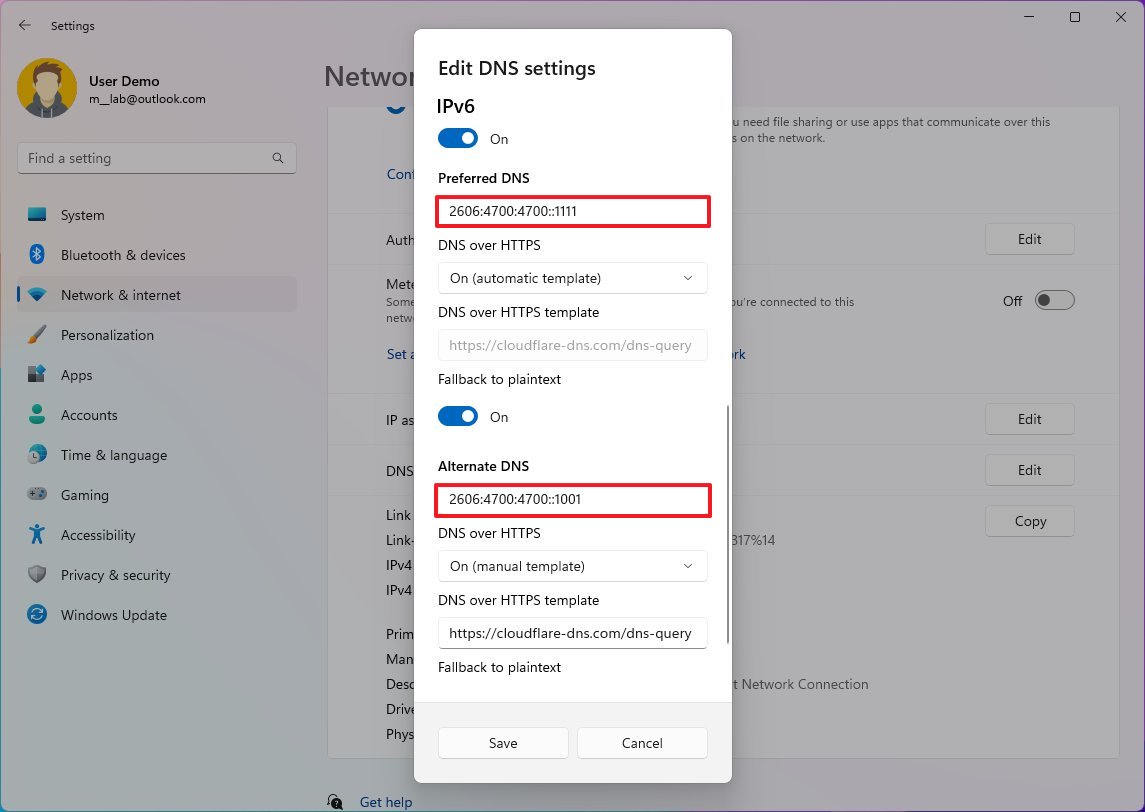
- Under the “Alternate DNS” section, specify the secondary Cloudflare DNS address: 2606:4700:4700::1001
- (Optional) Select the “Encrypted only (DNS over HTTPS)” option from the “DNS over HTTPS” setting.
- Click the Save button.
Once you complete the steps, the computer will use the Cloudflare servers to resolve domain names.
How to configure Cloudflare DNS service on Windows 10
To configure the Cloudflare DNS settings on Windows 10, do the following:
- Open Start.
- Search for Control Panel, and click the top result to open the experience.
- Click on Network and Internet.
- Click on Network and Sharing Center.
- Click on Change Adapter Settings.
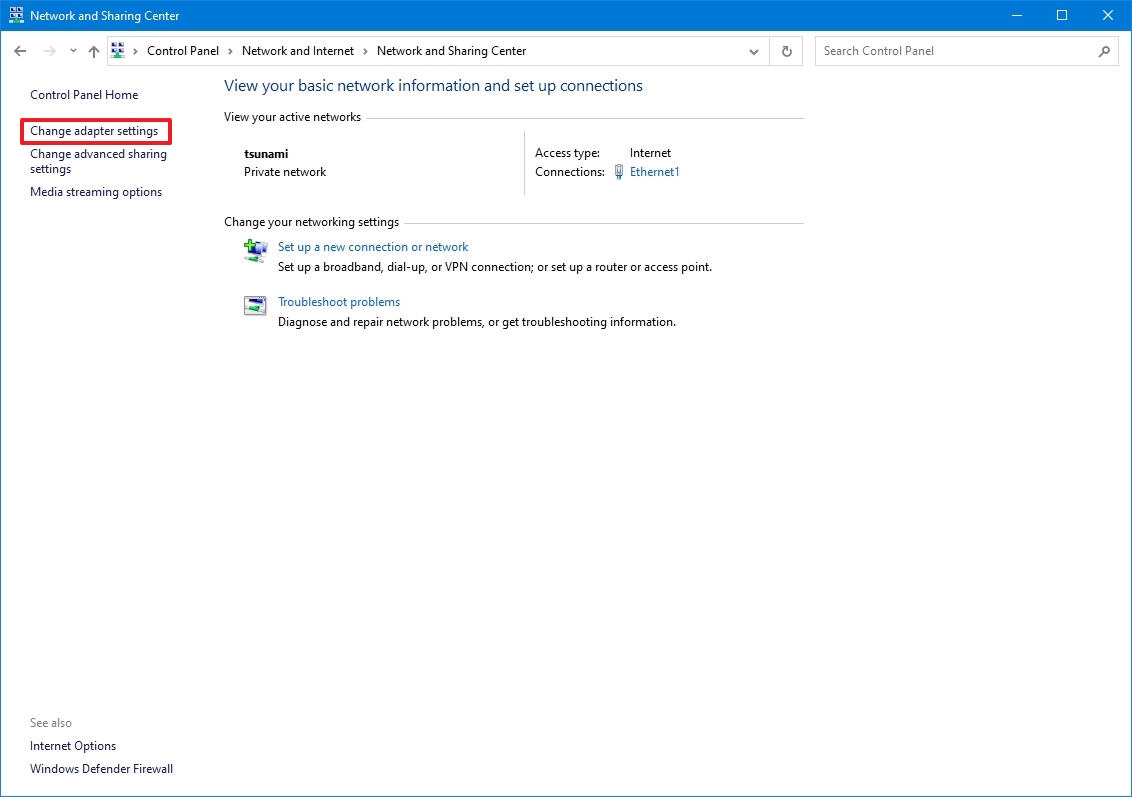
- Right-click the active Wi-Fi or Ethernet adapter, and select the Properties option.
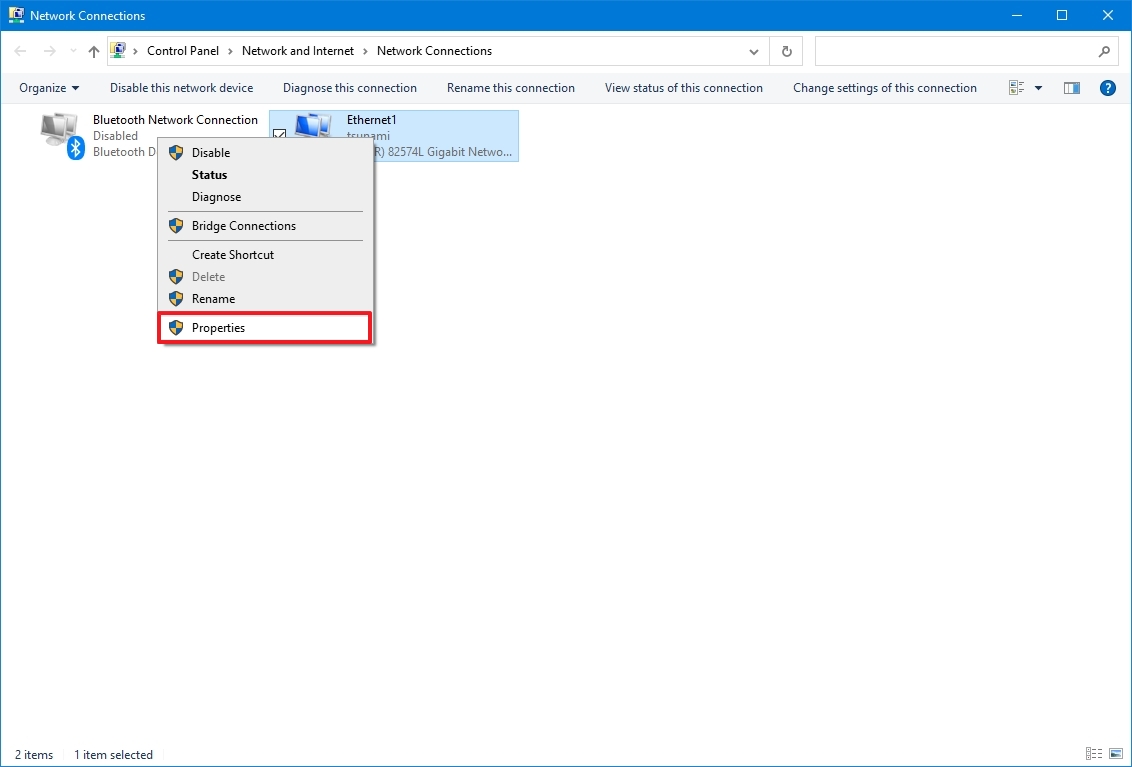
- Select the “Internet Protocol Version 4 (TCP/IPv4)” option.
- Click the Properties button.
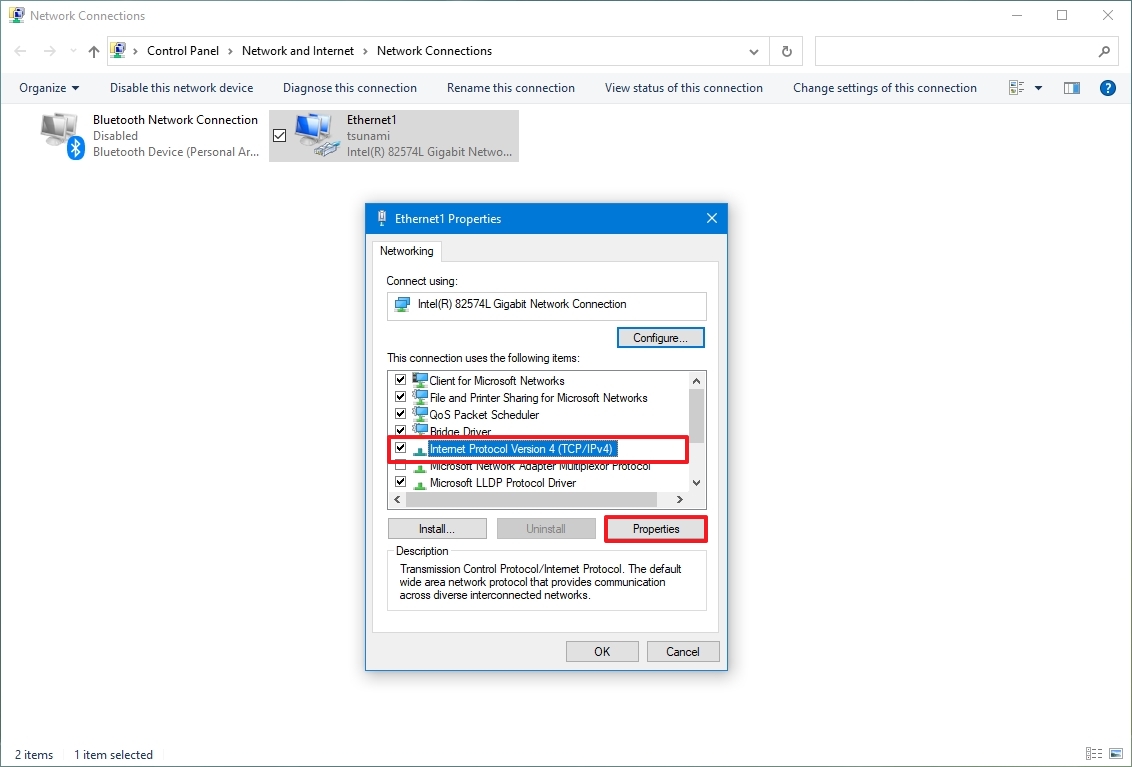
- Select the “Use the following DNS server addresses” option.
- In the “Preferred DNS server” field, enter this IPv4 address: 1.1.1.1
- In the “Alternative DNS server” field, enter this IPv4 address: 1.0.0.1
- Click the OK button.

- (Optional) Select the option if the “Internet Protocol Version 6 (TCP/IPv6)” stack is enabled in the network adapter properties.
- Click the Properties button.
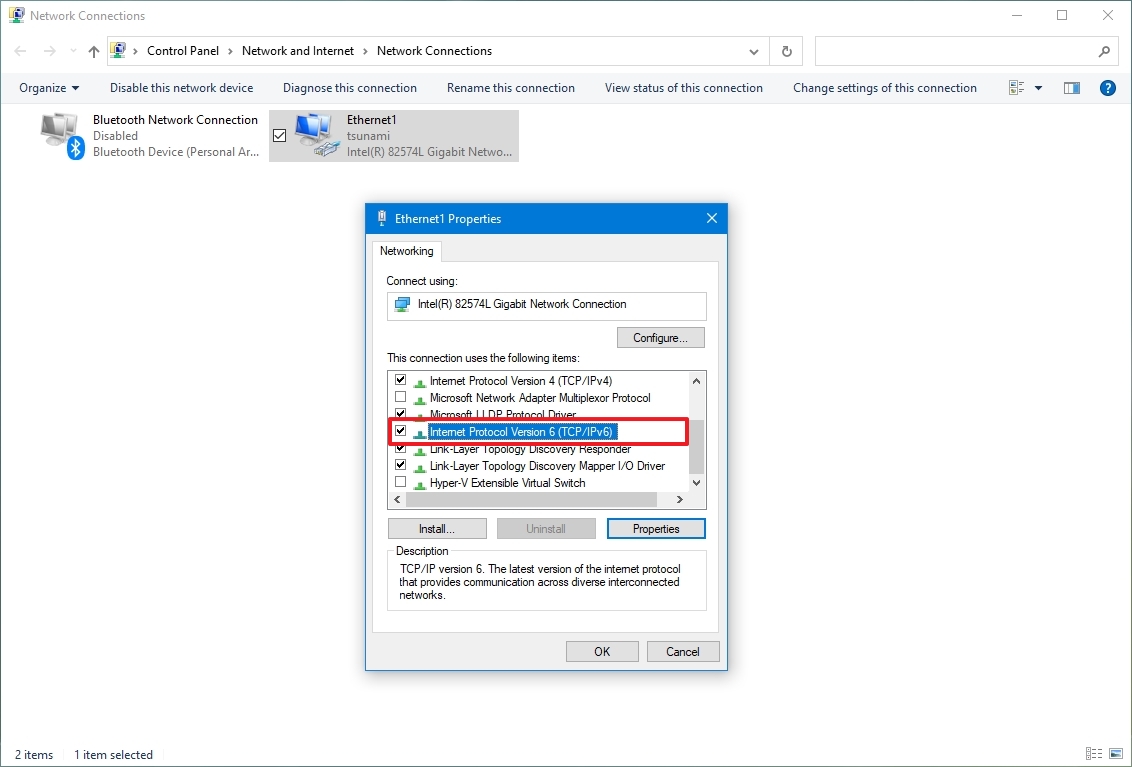
- Select the Use the following DNS server addresses option.
- In the “Preferred DNS server” field, enter this IPv6 address: 2606:4700:4700::1111
- In the “Alternative DNS server” field, enter this IPv6 address: 2606:4700:4700::1001
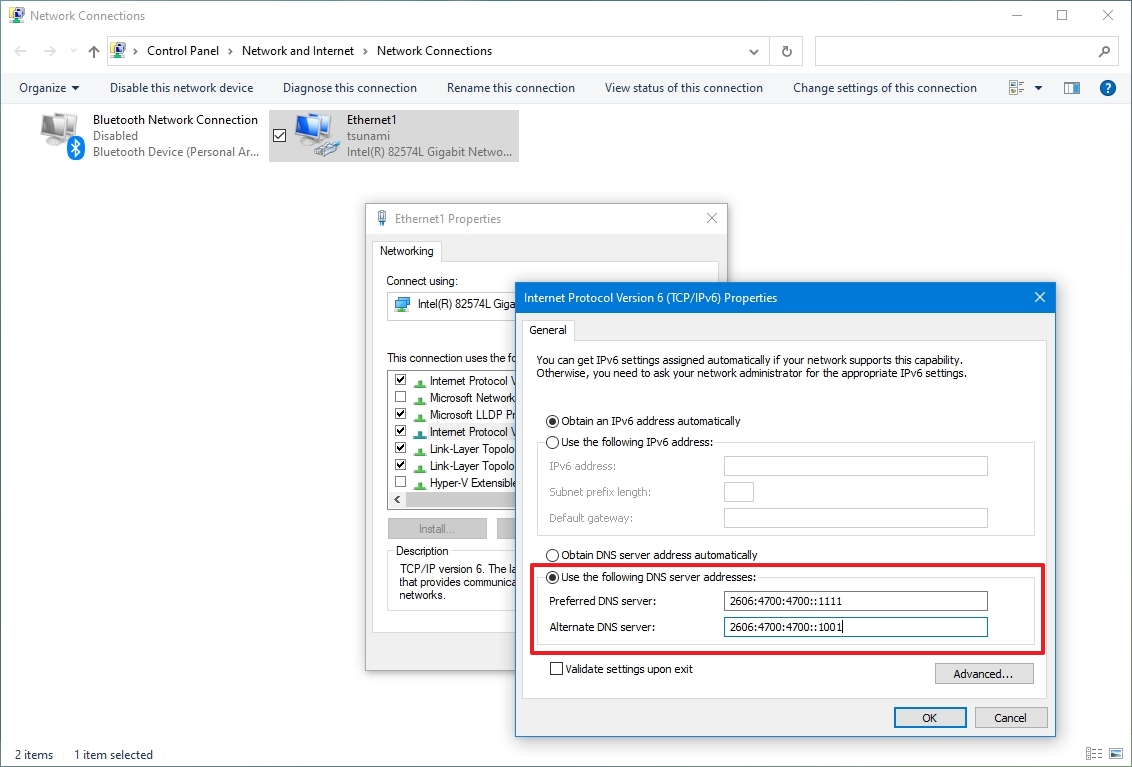
- Click the OK button.
- Click the Close button.
After completing the steps, your device will contact the Cloudflare servers to resolve domain names (for example, Google.com or WindowsCentral.com).
The steps mentioned above focus on Windows 10, but the instructions will also work on Windows 8.1 and 7.
How to check if you’re using the Cloudflare DNS settings
If you want to make sure that you’re in fact using the Cloudflare DNS settings, you can use the nslookup tool to find out this information quickly:
- Open Start.
- Search for cmd, and click the top result to open Command Prompt.
- Type the following command and press Enter: nslookup
The output of the command should include this result:
- Default Server: one.one.one.one
- Address: 1.1.1.1
If you’re using the IPv6 addresses, then the output should look like this:
- Default Server: one.one.one.one
- Address: 2606:4700:4700::1111
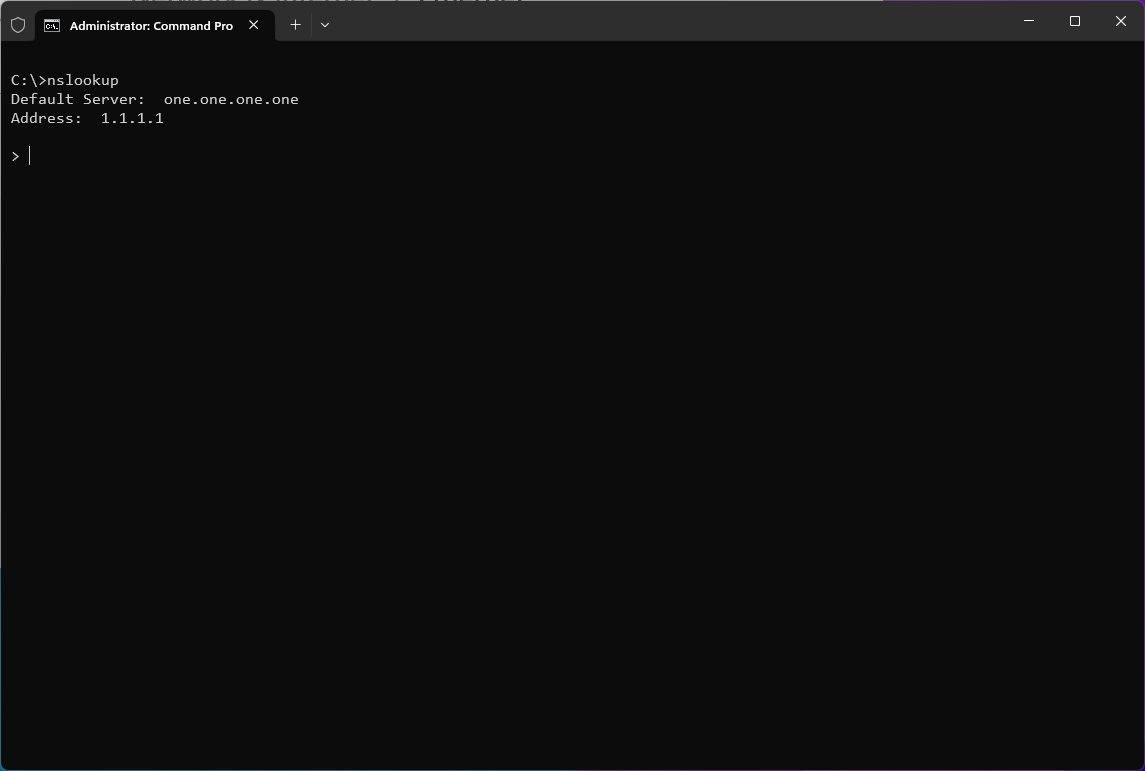
If you’re configuring your router instead of your computer, the nslookup tool will show the IP address of your router. This is an expected result as it’s your router the one that is making the DNS requests on behalf of all the devices connected in the network.
If this is the case, you can verify that the Cloudflare DNS settings are configured correctly using your router’s network tools (if applicable), and using the nslookup method to test the settings.

More resources
For more helpful articles, coverage, and answers to common questions about Windows 10 and Windows 11, visit the following resources:





